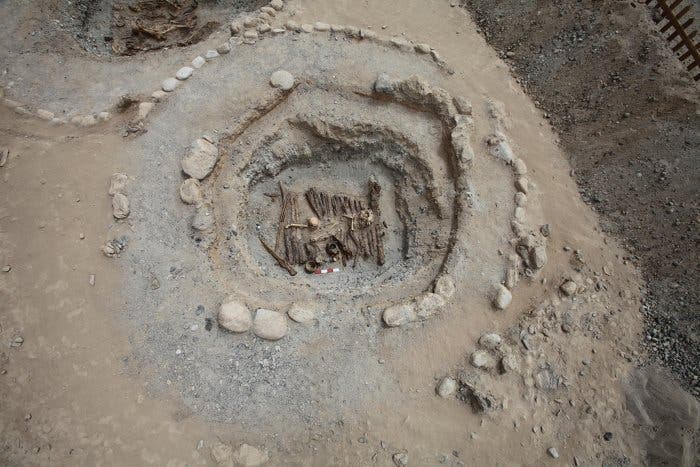East Asians grew cannabis over 6,000 years ago, but it’s not entirely clear what they did with it. Most evidence shows that they were consuming its oily seeds and making clothes and rope from the plant’s fibers, but evidence for inhalation and smoking remains limited. A cemetery from 2,500 years ago might help us better understand how ancient people used cannabis for its mind-altering properties.

Jirzankal Cemetery lies some 3,000 meters above sea level, in the Pamir Mountains. It’s a rocky environment, riddled with circular mounts of earth covering tombs. The tombs themselves are outlined by one or two rings of stones, while black and white stone strips run across the site’s entire surface. It’s an important site that has remained remarkably intact over the centuries.
A team led by archaeologist Yimin Yang of the University of Chinese Academy of Sciences in Beijing found and analyzed chemical residues on 10 wooden burners (braziers) found in eight tombs at the site. When they analyzed these burners, they found an unusually high level of THC (the psychoactive substance inside cannabis) inside nine of them, as well as two stones that had been heated to burn plants — a clear indication that ancient people were using marijuana for burial rituals.
Ancient cannabis plants have much lower THC content than today’s plants, which have been carefully selected for this purpose. For the plants meant to be used for clothes and rope, the THC quantity was virtually negligible, and even for the ancient plants such as those found at the Jirzankal Cemetery, the effects wouldn’t have been quite as strong. Nevertheless, it seems that high up in the mountains, ancient Chinese were using the plants to also get (ritually) high.
It’s not known whether these people grew the plants themselves or if they harvested them from the wild. But, what is known is that this marijuana smoking might also tell us a thing or two about trade at the time.
It’s a remarkable indication of how early humans were interacting with the surrounding environment.
“I think this is a wonderful example of how closely intertwined humans are and have been with the world around them,” said archaeobotanist Robert Spengler of the Max Planck Institute for the Science of Human History, who was also a co-author of the study.
“They impose evolutionary pressures on the plants around them, and in some cases this actually leads to domestication. Humans have always sought out plants with secondary metabolites that have an effect on the human body. Premodern humans had an intimate understanding of the plants around them.”
This is hardly the first ancient indication of cannabis usage. The Greek historian Herodotus wrote of cannabis smoking some 2,500 years ago in the steppes of central Asia. High-elevation mountain passes such as the area around Jirzankal were part of important trade routes along the early Silk Road, which linked China to Europe and the rest of Western Asia. Spengler, who works at the Max Planck Institute for the Science of Human History in Jena, Germany, says that cannabis may have been a significant trade commodity.
“Our study implies that knowledge of cannabis smoking and specific high-THC varieties of the cannabis plant were among the cultural traditions that spread along Silk Road exchange routes,” Spengler said at a recent conference.
In support of this theory, previous chemical analyses from bones and teeth found in the Jirzankal Cemetery indicated that people were eating plants grown outside of China, presumably brought along the Silk Road. Some items (including silk and a harp brought from West Asia) also supports this theory.
The research has been published in Science Advances.


